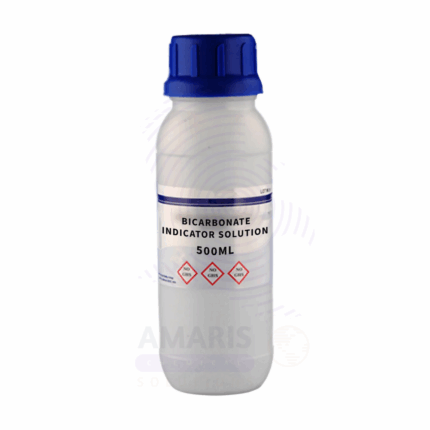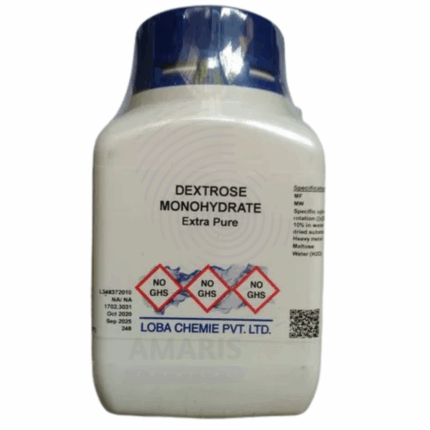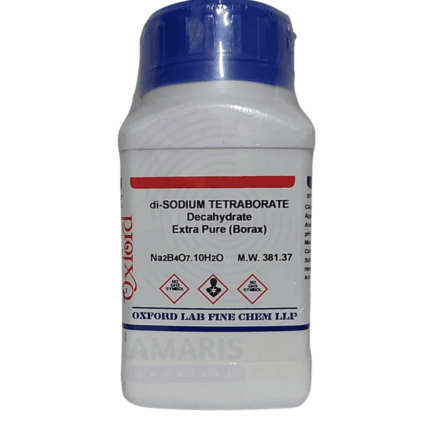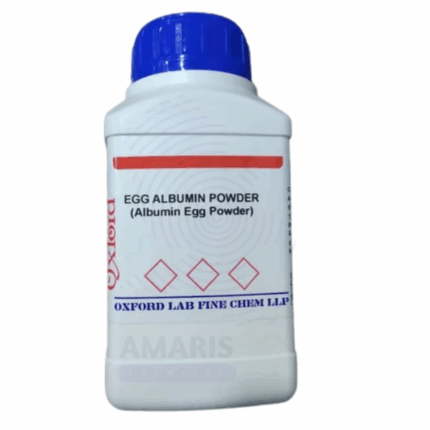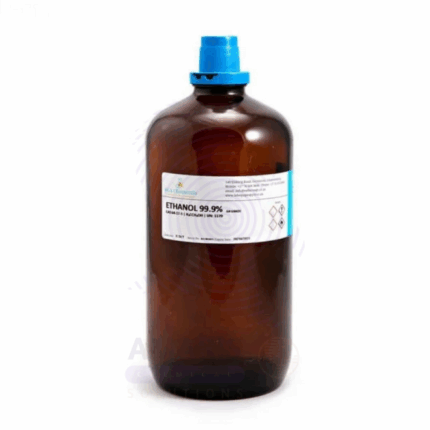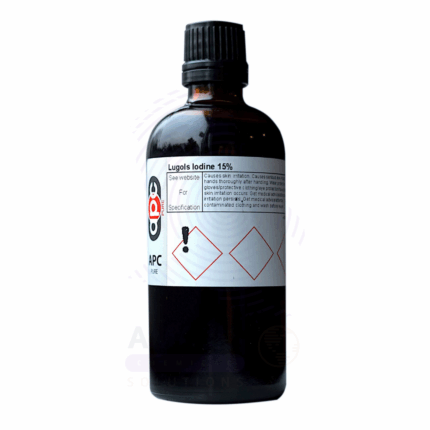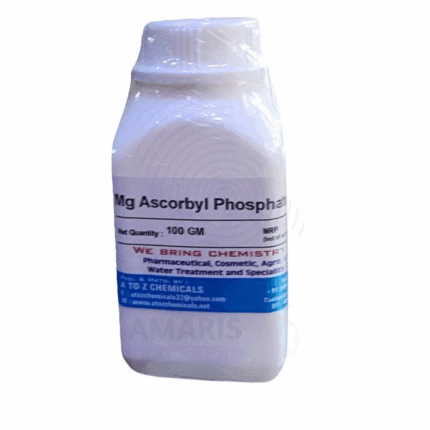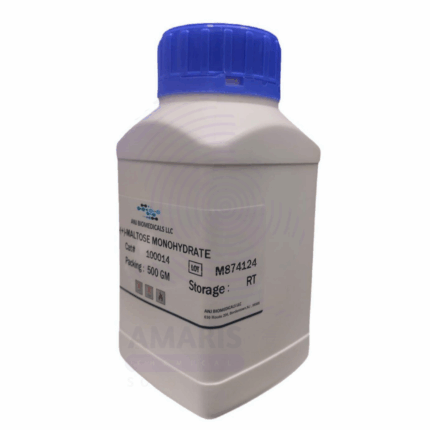Nutrient Agar
Whatsapp Order
Product Description
Nutrient Agar is a general-purpose solid growth medium used extensively in microbiology laboratories for the cultivation of a wide variety of non-fastidious microorganisms. It consists of a blend of peptones, beef extract, and agar as the solidifying agent. Nutrient Agar supports the growth of bacteria and fungi, providing essential nutrients such as amino acids, nitrogen, vitamins, and minerals.
Description
Table of Contents
Toggle
Uses
Primary Uses
- Microbial Cultivation
- Supports growth of a broad spectrum of bacteria and fungi in laboratory cultures.
- Used for routine isolation, maintenance, and enumeration of microorganisms.
- Quality Control Testing
- Employed in pharmaceutical, food, and cosmetic industries for microbial contamination testing.
- Educational Purposes
- Widely used in academic institutions for teaching microbiology and conducting experiments.
- Research Applications
- Used as a baseline medium for microbiological research and microbial strain maintenance.
Secondary Uses
- Antibiotic Sensitivity Testing
- Serves as a base medium for disc diffusion tests with added supplements.
- Environmental Microbiology
- Used to isolate and cultivate environmental microbes from soil and water samples.
- Biotechnology
- Serves as a medium for microbial culture in small-scale biotechnological assays.
- Microbial Enumeration
- Applied in quantifying viable microbial counts in various samples via plate counts.
KEY PRODUCT FEATURES
Key Attributes
Basic Identification Attributes
- Chemical Name (IUPAC): Microbiological growth medium (complex mixture)
- Common/Trade Name: Nutrient Agar
- CAS Number: Not applicable (mixture)
- HS Code: 3822.00.00
- Synonyms: General Purpose Agar Medium
Physical & Chemical Properties
- Physical State: Solid (powdered form for preparation); gel (after preparation)
- Color: Pale yellow to light amber after sterilization
- Odor: Characteristic mild peptone/beef extract smell
- pH: Typically 6.8 ± 0.2 at 25°C
- Solubility: Soluble in boiling water; forms gel upon cooling
Safety & Hazard Attributes
- GHS Classification: Not classified as hazardous
- Toxicity: Non-toxic under normal laboratory handling
- Exposure Limits: No specific limits; standard microbiological lab safety applies
Storage & Handling Attributes
- Storage Conditions: Store in a cool, dry place in sealed containers
- Container Type: Supplied in powder form in plastic or glass bottles
- Shelf Life: 1–2 years if stored properly
- Handling Precautions: Avoid inhalation of powder; use aseptic techniques
Regulatory & Compliance Attributes
- Complies with microbiological culture medium standards such as USP, EP, and ISO 11133
- Manufactured under Good Manufacturing Practices (GMP) for laboratory reagents
Environmental & Health Impact
- Biodegradability: Biodegradable organic material
- Ecotoxicity: Low environmental risk when disposed of properly
- Bioaccumulation: Not applicable
- Carcinogenicity/Mutagenicity: Not classified as hazardous
SAFETY HANDLING PRECAUTIONS
Safety Handling Precautions
- PPE Required: Lab coat, gloves, and eye protection recommended
- Handling Guidelines: Use in sterile conditions; avoid ingestion or inhalation of powders
- Storage Measures: Keep container tightly closed to prevent moisture uptake
First Aid Measures
- Inhalation: Move to fresh air if respiratory irritation occurs
- Skin Contact: Wash with soap and water if irritation develops
- Eye Contact: Rinse eyes with water for 15 minutes; seek medical attention if irritation persists
- Ingestion: Rinse mouth; seek medical advice if adverse effects occur
Firefighting Measures
- Fire Hazards: Non-flammable; may burn under extreme heat
- Extinguishing Media: Use water spray, foam, or dry chemical extinguishers
- Special Precautions: Avoid inhalation of dust during handling
- Hazardous Combustion Products: Carbon oxides and nitrogen oxides
Related products
Bicarbonate Indicator Extra Pure
Bicarbonate Indicator Extra Pure is a high-purity, specially formulated solution used in laboratory settings to detect and monitor changes in bicarbonate ion concentration, particularly in biological and environmental experiments. It typically contains a pH-sensitive dye that changes color in response to shifts in carbon dioxide or bicarbonate levels, making it valuable in studies of respiration, photosynthesis, and water quality. This indicator is often employed in teaching labs to visually demonstrate gas exchange or acid-base balance. The extra pure grade ensures consistent performance, color clarity, and minimal background interference in precise analytical work. It should be stored in a cool, dark place in a tightly closed container to maintain its sensitivity and stability.
Dextrose Monohydrate Extra Pure
Dextrose Monohydrate Extra Pure is a high-purity crystalline form of glucose containing one molecule of water. It is widely used in laboratory settings as a carbon source in microbial culture media, fermentation processes, and biochemical assays. Its precise composition and consistent solubility make it ideal for preparing nutrient solutions, buffers, and test reagents. In research and educational labs, it supports various metabolic and enzymatic studies. This extra pure grade ensures minimal impurities, providing reliable results in sensitive analytical and biological applications. Store in a tightly sealed container in a cool, dry place to preserve its quality and prevent clumping.
Di-sodium Tetraborate Borax Extra Pure
Di-sodium Tetraborate Borax Extra Pure is a high-purity boron compound widely used in laboratory applications for its buffering, emulsifying, and fluxing properties. In analytical chemistry, it serves as a reagent in qualitative and quantitative analysis, particularly in flame tests and as a flux in the preparation of glass beads for spectroscopy. Its buffering capacity is valuable in maintaining pH stability in various solutions, while its detergent-like action supports cleaning and sample preparation. This extra pure grade ensures minimal contaminants, making it ideal for precision work in research, teaching, and industrial laboratories. Store in a cool, dry environment in a well-sealed container.
Egg Albumen Extra Pure
Egg Albumen Extra Pure is a high-grade laboratory reagent derived from the white of eggs, known for its excellent protein content and binding properties. It is commonly used in biochemical experiments, protein electrophoresis, microbiological media, and as a blocking agent in immunoassays like ELISA. Its purity ensures consistent results in sensitive lab procedures involving protein interactions, enzyme activity studies, and cell culture applications.
Ethanol Extra pure
Ethanol Extra pure Extra Pure is a highly purified grade of ethyl alcohol widely used in laboratory, pharmaceutical, cosmetic, and analytical applications. At 99.8% purity, it contains minimal water, making it ideal for dehydration reactions, chromatography, spectroscopy, and cleanroom procedures. It serves as a universal solvent, disinfectant, and intermediate in chemical synthesis. This extra pure grade ensures low impurity levels, making it suitable for precision scientific experiments and pharmaceutical formulations. It is volatile and flammable, so it should be stored tightly sealed, in a cool, well-ventilated area, away from ignition sources.
Lugols Iodine Extra Pure
Lugols Iodine Extra Pure is a superior-grade aqueous solution composed of elemental iodine and potassium iodide, known for its wide-ranging applications in laboratories, microscopy, and medical diagnostics. Valued for its strong staining properties, it is commonly used in biology to identify starch in plant cells and as a general-purpose cellular stain to enhance visibility under a microscope. Its extra pure formulation ensures high clarity, minimal impurities, and consistent results in sensitive applications. Additionally, it plays a role in preparing specimens, sterilization procedures, and certain medical antiseptic practices. Store tightly sealed, away from light and heat, to preserve potency.
Magnesium Ascorbyl Phosphate Extra Pure
Magnesium Ascorbyl Phosphate Extra Pure is a highly stable, water-soluble derivative of Vitamin C, widely appreciated for its exceptional antioxidant properties and gentle skin compatibility. Commonly used in cosmetic and dermatological formulations, it helps brighten the skin, reduce hyperpigmentation, and support collagen synthesis—making it a valuable ingredient in anti-aging and skin-repair treatments. Its stability against oxidation allows it to retain potency longer than pure ascorbic acid, especially in aqueous solutions. With pharmaceutical and cosmetic grade purity, this compound is ideal for use in serums, lotions, and creams targeting a healthy, radiant complexion.
Maltose Extra Pure
Maltose Extra Pure is a disaccharide composed of two glucose units, commonly known as malt sugar. This extra pure grade ensures exceptional quality and consistency, making it ideal for use in biochemical research, fermentation studies, and laboratory analysis. In the food industry, maltose is valued for its mild sweetness and is often used in brewing, baking, and confectionery to promote fermentation and enhance flavor. It also plays a role in energy metabolism studies and is frequently used as a carbon source in microbiological media. Its stability and solubility in water make it easy to incorporate into various formulations, offering a dependable ingredient for scientific and industrial use where high purity is essential.


 Preservatives(food)
Preservatives(food) Flavor Enhancers
Flavor Enhancers Acidulants
Acidulants Sweeteners
Sweeteners Antioxidants
Antioxidants Colorants(food)
Colorants(food) Nutraceutical Ingredients (food)
Nutraceutical Ingredients (food) Nutrient Supplements
Nutrient Supplements Emulsifiers
Emulsifiers
 Collectors
Collectors Dust Suppressants
Dust Suppressants Explosives and Blasting Agents
Explosives and Blasting Agents Flocculants and Coagulants
Flocculants and Coagulants Frothers
Frothers Leaching Agents
Leaching Agents pH Modifiers
pH Modifiers Precious Metal Extraction Agents
Precious Metal Extraction Agents
 Antioxidants(plastic)
Antioxidants(plastic) Colorants (Pigments, Dyes)
Colorants (Pigments, Dyes) Fillers and Reinforcements
Fillers and Reinforcements Flame Retardants
Flame Retardants Monomers
Monomers Plasticizers
Plasticizers Polymerization Initiators
Polymerization Initiators Stabilizers (UV, Heat)
Stabilizers (UV, Heat)
 Antifoaming Agents
Antifoaming Agents Chelating Agents
Chelating Agents Coagulants and Flocculants
Coagulants and Flocculants Corrosion Inhibitors
Corrosion Inhibitors Disinfectants and Biocides
Disinfectants and Biocides Oxidizing Agents
Oxidizing Agents pH Adjusters
pH Adjusters Scale Inhibitors( water)
Scale Inhibitors( water)
 Antioxidants(cosmetic)
Antioxidants(cosmetic) Emollients
Emollients Fragrances and Essential Oils
Fragrances and Essential Oils Humectants
Humectants Preservatives
Preservatives Surfactants(cosmetic)
Surfactants(cosmetic) Thickeners
Thickeners UV Filters
UV Filters
 Fertilizers
Fertilizers Soil Conditioners
Soil Conditioners Plant Growth Regulators
Plant Growth Regulators Animal Feed Additives
Animal Feed Additives Biostimulants
Biostimulants Pesticides (Herbicides, Insecticides, Fungicides)
Pesticides (Herbicides, Insecticides, Fungicides)
 Active Pharmaceutical Ingredients (APIs)
Active Pharmaceutical Ingredients (APIs) Excipients
Excipients Solvents(pharmaceutical)
Solvents(pharmaceutical) Antibiotics
Antibiotics Antiseptics and Disinfectants
Antiseptics and Disinfectants Vaccine Adjuvants
Vaccine Adjuvants Nutraceutical Ingredients (pharmaceutical)
Nutraceutical Ingredients (pharmaceutical) Analgesics & Antipyretics
Analgesics & Antipyretics
 Analytical Reagents
Analytical Reagents Solvents(lab)
Solvents(lab) Chromatography Chemicals
Chromatography Chemicals Spectroscopy Reagents
Spectroscopy Reagents microbiology-and-cell-culture-reagents
microbiology-and-cell-culture-reagents Molecular Biology Reagents
Molecular Biology Reagents Biochemical Reagents
Biochemical Reagents Inorganic and Organic Standards
Inorganic and Organic Standards Laboratory Safety Chemicals
Laboratory Safety Chemicals Specialty Laboratory Chemicals(Special Laboratory Equipment)
Specialty Laboratory Chemicals(Special Laboratory Equipment)
 Demulsifiers
Demulsifiers Hydraulic Fracturing Fluids
Hydraulic Fracturing Fluids Scale Inhibitors(oil)
Scale Inhibitors(oil) Surfactants(oil)
Surfactants(oil) Drilling Fluids
Drilling Fluids
 Dyes and Pigments
Dyes and Pigments Bleaching Agents
Bleaching Agents Softening Agents
Softening Agents Finishing Agents
Finishing Agents Antistatic Agents
Antistatic Agents
 Admixtures
Admixtures Waterproofing Agents
Waterproofing Agents Sealants and Adhesives
Sealants and Adhesives Curing Compounds
Curing Compounds Concrete Repair Chemicals
Concrete Repair Chemicals Anti-Corrosion Coatings
Anti-Corrosion Coatings
 Surfactants(cleaning)
Surfactants(cleaning) Builders
Builders Enzymes
Enzymes Solvents (Cleaning)
Solvents (Cleaning) Fragrances
Fragrances
 Electronic Chemicals
Electronic Chemicals Catalysts
Catalysts Lubricants
Lubricants Photographic Chemicals
Photographic Chemicals Refrigerants
Refrigerants Automotive chemicals
Automotive chemicals Pyrotechnic Chemicals
Pyrotechnic Chemicals
 Biodegradable Surfactants
Biodegradable Surfactants Bio-based Solvents
Bio-based Solvents Renewable Polymers
Renewable Polymers Carbon Capture Chemicals
Carbon Capture Chemicals Wastewater Treatment Chemicals
Wastewater Treatment Chemicals
 Pigments
Pigments Solvents(paint)
Solvents(paint) Specialty Coatings
Specialty Coatings Binders/Resins
Binders/Resins Additives
Additives Driers
Driers Anti-Corrosion Agents
Anti-Corrosion Agents Functional Coatings
Functional Coatings Application-Specific Coatings
Application-Specific Coatings
 Fresh Herbs
Fresh Herbs Ground Spices
Ground Spices Whole Spices
Whole Spices Spice Blends
Spice Blends Dried Herbs
Dried Herbs
 Leavening Agents
Leavening Agents Dough Conditioners
Dough Conditioners Flour Treatments
Flour Treatments Fat Replacers
Fat Replacers Decoratives
Decoratives Preservatives(baking)
Preservatives(baking)
 Plasticizers & Softeners
Plasticizers & Softeners Reinforcing Agents
Reinforcing Agents Adhesion Promoters
Adhesion Promoters Vulcanizing Agents
Vulcanizing Agents Antidegradants
Antidegradants Blowing Agents
Blowing Agents Fillers & Extenders
Fillers & Extenders Accelerators & Retarders
Accelerators & Retarders


